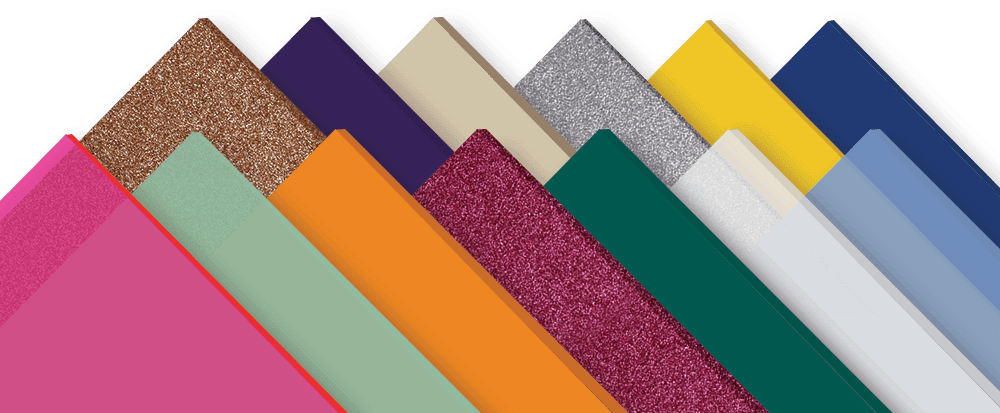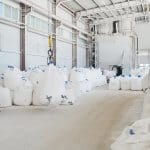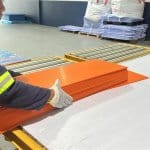Beyond Transparency: Choosing the Right Acrylic Sheet for Industrial Performance
Acrylic’s versatility spans industries from architectural glazing to precision medical components. Yet, unlocking its full potential depends on understanding its two primary forms: Cast Acrylic Sheets and Extruded Acrylic Sheets. For manufacturers, designers, and procurement managers, this decision is not merely technical, it’s strategic. Selecting the wrong material can lead to increased costs, reduced performance, and compromised product integrity.
This guide explores the key differences between cast and extruded acrylic, helping you align your choice with operational demands and long-term business goals.
What Are Cast Acrylic Sheets?
Produced through a meticulous batch process, Cast Acrylic Sheets offer unmatched clarity, durability, and fabrication flexibility. The manufacturing method involves pouring liquid acrylic monomer into moulds, followed by controlled polymerisation. This slower process results in superior material properties, making cast acrylic ideal for high-performance and visually demanding applications.
Advantages of Cast Acrylic Sheets
The most notable advantage of our APEX™ or PERSPEX® cast acrylic lies in its optical clarity. With exceptional light transmission and a glass-like finish, it’s the preferred choice for museum vitrines, luxury retail displays, and precision optical components. This clarity enhances product visibility and elevates brand perception.
In addition to visual excellence, cast acrylic offers outstanding durability. Its higher molecular weight contributes to superior hardness and scratch resistance, making it suitable for high-traffic environments and frequent handling. This resilience reduces replacement frequency and supports long-term cost efficiency.
Chemical resistance is another strength. Cast acrylic withstands exposure to solvents and cleaning agents, making it ideal for laboratory and industrial settings. Moreover, its fabrication performance is unmatched, it cuts, drills, and polishes cleanly, enabling intricate designs without melting or chipping.
Thermal stability further enhances its value. In outdoor signage or architectural glazing, cast acrylic maintains structural integrity across temperature fluctuations. However, its premium performance comes at a higher cost, and sheet thickness may vary slightly due to the batch process. These factors should be weighed against project requirements.
What Are Extruded Acrylic Sheets?
In contrast, Extruded Acrylic Sheets are manufactured through a continuous extrusion process. Molten acrylic polymer is pushed through a die, cooled, and cut into sheets. This method prioritises consistency and efficiency, making extruded acrylic ideal for large-scale production and applications requiring uniform thickness.
Advantages of Extruded Acrylic Sheets
Cost-effectiveness is the primary appeal of extruded acrylic. It supports budget-sensitive projects such as signage, protective barriers, and point-of-sale displays. The consistent sheet thickness simplifies automated fabrication and reduces material waste, improving operational efficiency.
Extruded acrylic also excels in thermoforming. Its lower softening temperature allows for rapid shaping, bending, and vacuum forming, which accelerates production cycles. This makes it suitable for custom enclosures, light diffusers, and other complex forms.
While softer than cast acrylic, extruded sheets still offer reliable impact resistance for general-purpose use. However, they are more prone to scratching and chemical sensitivity. Additionally, internal stresses from the extrusion process may complicate machining, requiring expert handling to avoid chipping or cracking.
Cast vs Extruded Acrylic Sheets: Key Differences That Matter
The manufacturing processes of cast and extruded acrylic sheets directly influence their properties and ideal applications. This distinction carries significant implications for performance, aesthetics, and cost.
Cast acrylic, produced via batch moulding, offers superior optical purity and greater hardness. These qualities result in exceptional scratch resistance, robust chemical durability, and thermal stability. However, its higher cost and slight thickness variation across large sheets must be considered.
Extruded acrylic, created through continuous extrusion, delivers consistent thickness and cost-efficiency. While its clarity is good, it does not match the pristine transparency of cast acrylic. Its lower softening temperature supports rapid thermoforming, but its softness and internal stress can complicate precise machining.
Understanding these differences is essential for businesses aiming to optimise material spend and achieve superior product outcomes.
Strategic Material Selection for Industrial Success
Choosing the right acrylic type is not about identifying a universally “better” material. It’s about selecting the one that aligns with your specific application and business goals.
If your project demands premium clarity and a high-gloss finish, such as museum displays, bespoke furniture, or optical components. Cast Acrylic Sheets are the clear choice. Their machinability supports intricate routing and polishing with exacting tolerances.
For cost-sensitive, high-volume applications like signage, general glazing, or formed components, Extruded Acrylic Sheets offer unmatched value. Their consistent thickness supports automated manufacturing, while their flexibility enhances thermoforming efficiency.
Long-term value also matters. Cast acrylic’s durability reduces maintenance and replacement cycles, lowering total cost of ownership. For short lifecycle products or where formability outweighs hardness, extruded acrylic provides a balanced, cost-effective solution.
Partnering with Cast Acrylic Sheet Manufacturers or suppliers who understand both materials is essential. Their expertise can unlock efficiencies and elevate your project outcomes.
Empowering Your Polymer Journey
The world of acrylic offers vast potential, but only when material selection is informed and strategic. Understanding the properties and applications of Cast and Extruded Acrylic Sheets transforms a technical choice into a competitive advantage.
From enhancing aesthetics and durability to streamlining production and reducing costs, the right acrylic choice underpins your success. Empower your business with precision knowledge and ensure every project delivers lasting value.
Ready to optimise your next project with the perfect acrylic solution?
Connect with our material experts today for tailored advice or find a reseller here.







